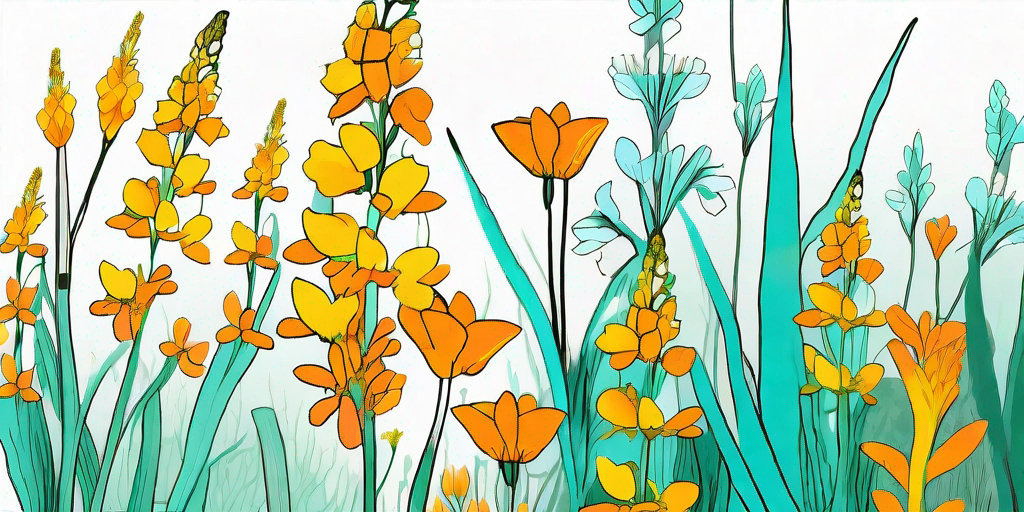
If your garden is looking a bit drab and you're yearning for a splash of sunshine, then it's time to meet your new best friend: Bulbine. This radiant plant is the perfect way to brighten up your garden and create a stunning landscape. But what is Bulbine, and how can you use it to transform your garden? Buckle up, dear reader, because we're about to embark on a horticultural adventure!
What is Bulbine?
Before we dive into the nitty-gritty, let's get to know our star of the show. Bulbine is a genus of plants that's native to southern Africa and Australia. These hardy perennials are renowned for their ability to withstand harsh conditions, making them a fantastic choice for gardeners who are less green-thumbed and more, well, cactus-handed.
But it's not just their resilience that makes them a popular choice. Bulbine plants are also known for their vibrant yellow or orange flowers, which can bring a much-needed burst of color to any garden. So, if your garden is more '50 Shades of Green' than 'Technicolor Dreamcoat', Bulbine could be just the ticket.
The Different Types of Bulbine
Like any good genus, Bulbine comes in a variety of species. The most popular of these is Bulbine frutescens, also known as the snake flower or burn jelly plant. This species is particularly well-known for its long, slender leaves and bright yellow flowers.
Another popular choice is Bulbine natalensis, which is often used in traditional medicine due to its purported health benefits. This species has a more compact growth habit and produces beautiful orange flowers. So, whether you're after a health boost or a garden glow-up, there's a Bulbine for you.
How to Grow Bulbine
Now that we're acquainted with our sunny friend, let's get down to business. Growing Bulbine is a relatively straightforward process, even for those of us who struggle to keep a cactus alive. Here's a step-by-step guide to help you on your way.
Step 1: Choose Your Spot
Bulbine plants love the sun, so choose a spot in your garden that gets plenty of light. They're not fussy about soil type, but they do prefer well-drained soil. So, if your garden is more swamp than savannah, you might want to consider improving your drainage before planting.
Step 2: Plant Your Bulbine
Once you've chosen your spot, it's time to plant. Dig a hole that's twice as wide and just as deep as the root ball of your plant. Place the plant in the hole, making sure the top of the root ball is level with the soil surface. Then, backfill the hole with soil, firming it gently around the base of the plant.
Step 3: Water and Wait
After planting, give your Bulbine a good drink of water. Then, sit back, relax, and wait for the magic to happen. With a bit of luck and a lot of sunshine, your Bulbine should start to bloom in no time.
Caring for Your Bulbine
Once your Bulbine is happily settled in its new home, it's important to keep it healthy and happy. Here are a few tips to help you do just that.
Watering
Bulbine plants are drought-tolerant, which means they don't need a lot of water. In fact, overwatering can lead to root rot, which is about as fun as it sounds. So, when it comes to watering your Bulbine, less is more. A good rule of thumb is to water when the top inch of soil is dry.
Feeding
While Bulbine plants aren't fussy eaters, they do appreciate a little snack every now and then. A slow-release fertilizer applied in the spring can help promote healthy growth and vibrant blooms. Just remember, moderation is key - too much fertilizer can cause more harm than good.
Pruning
Pruning your Bulbine can help keep it looking neat and tidy. Plus, it encourages the plant to produce more flowers - it's a win-win! To prune your Bulbine, simply cut back any dead or damaged leaves and remove spent flowers. Easy peasy!
FAQs
Still got questions? No problem! Here are some of the most frequently asked questions about Bulbine.
Is Bulbine deer resistant?
Yes, Bulbine plants are deer resistant. So, if you've got a herd of hungry deer eyeing up your garden, Bulbine could be a good choice.
Can Bulbine be grown in containers?
Absolutely! Bulbine plants are quite adaptable and can be grown in containers. Just make sure the container has good drainage to prevent waterlogging.
Is Bulbine frost hardy?
Bulbine plants can tolerate light frost, but they may not survive a harsh winter. If you live in a colder climate, consider growing your Bulbine in a container so you can bring it indoors during the winter.
Conclusion
So there you have it, folks! Everything you need to know about brightening up your garden with Bulbine. With its vibrant flowers, hardy nature, and easy care requirements, it's no wonder this sunny plant is a favorite among gardeners. So why not give it a go? Your garden will thank you for it!















